Stay in Touch
Sign up now to receive exclusive discounts and special offers, and discover new teas with every delivery. Join our tea subscription service and experience the ultimate in tea enjoyment
Welcome to our tea lexicon, where we delve into the diverse and rich world of green and black tea. From the lush green fields of Japan to the misty mountains of China, and the rolling hills of India and Sri Lanka, tea has captivated people around the globe for centuries. In this lexicon, we explore the myriad varieties and flavors of green and black tea, each with its own unique characteristics, production methods, and cultural significance. Whether you’re sipping on a delicate Sencha from Japan, a bold Assam from India, or indulging in the floral notes of a Darjeeling, there’s a tea to suit every palate and occasion. Join us as we journey through the enchanting world of tea, uncovering its history, traditions, and the art of brewing the perfect cup.
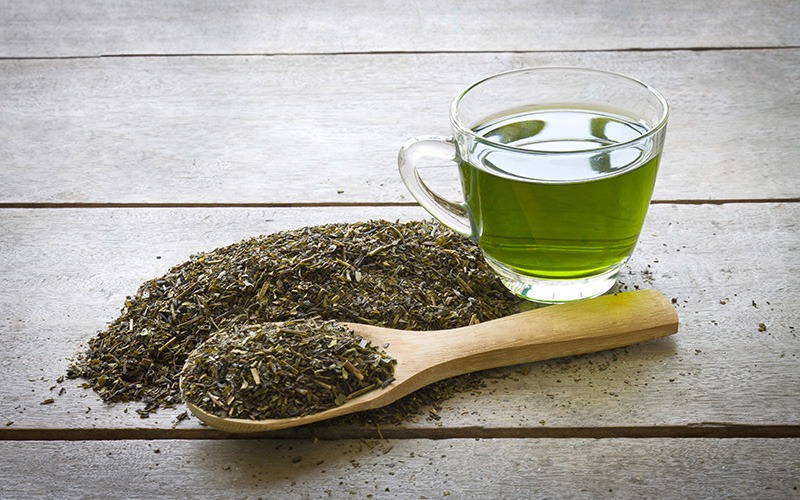
Sencha green tea, with its vibrant green color and refreshing flavor, holds a special place in Japanese culture and is cherished by tea enthusiasts worldwide. Renowned for its grassy aroma, subtle sweetness, and refreshing taste, Sencha has become a staple in tea ceremonies, daily rituals, and culinary delights. Let’s take a closer look at this beloved variety of green tea:
Origins and Cultivation:
Sencha green tea originated in Japan during the 18th century and quickly gained popularity due to its accessibility and versatility. It is primarily cultivated in Shizuoka, Kyoto, and Kagoshima, where the climate and soil conditions are ideal for tea cultivation. The tea leaves are carefully handpicked in the spring, shortly after the first flush, to ensure optimal flavor and freshness.
Processing Technique:
The processing of Sencha involves several meticulous steps to preserve its delicate flavor and aroma. After harvesting, the tea leaves undergo steaming to halt oxidation, followed by rolling and shaping to release the tea’s natural oils and flavors. Next, the leaves are dried and sorted to remove any impurities, resulting in the characteristic needle-like shape of Sencha leaves.
Flavor Profile:
Sencha green tea is known for its bright and refreshing taste, balanced vegetal notes, and umami sweetness. Steaming retains the tea’s vibrant green color and enhances its grassy aroma, reminiscent of freshly cut grass or seaweed. When brewed, Sencha yields a light-bodied liquor with a clean, crisp finish, making it ideal for casual sipping and formal ceremonies.
Brewing Recommendations:
To fully appreciate the delicate flavors of Sencha green tea, it’s essential to brew it carefully. Use filtered water heated to around 170-180°F (75-80°C) to avoid scorching the leaves and bring out the tea’s nuanced flavors. Steep the leaves for 1-2 minutes for the first infusion, adjusting the brewing time according to personal preference for subsequent infusions. You can enjoy it alone or with light snacks such as Japanese rice crackers or fresh fruit to complement its refreshing taste.
Cultural Significance:
In Japanese culture, Sencha green tea symbolizes hospitality, mindfulness, and tranquility. During tea ceremonies, where the ritual of preparing and serving tea is considered an art form, it is often served to guests as a gesture of welcome and respect. Sencha is also enjoyed as part of daily rituals, whether as a morning pick-me-up or a moment of relaxation in the afternoon.
Conclusion:
With its vibrant flavor, refreshing aroma, and rich cultural heritage, Sencha green tea offers a delightful sensory experience that captivates the senses and nourishes the body and soul. Whether enjoyed in the serene ambiance of a traditional tea room or the comfort of home, Sencha remains a timeless classic in green tea.
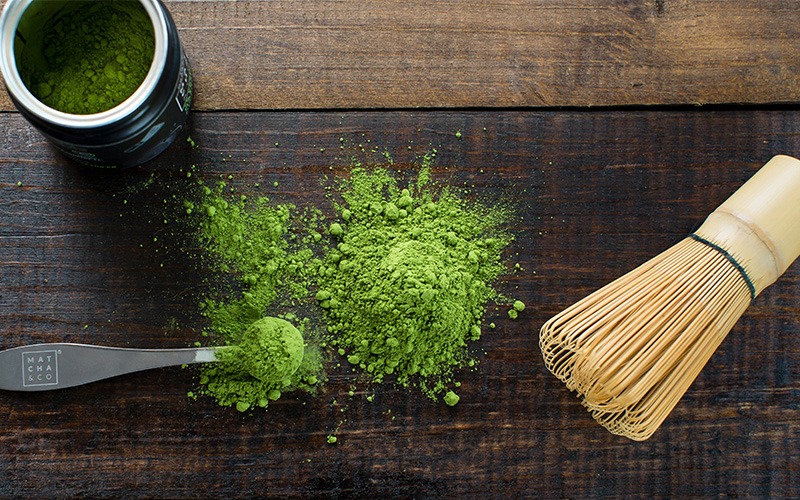
Unveiling the World of Matcha Green Tea: A Culinary Delight with Ancient Roots
Matcha green tea, a revered beverage in Japanese culture, has captured the hearts and palates of tea enthusiasts worldwide. Renowned for its vibrant green color, intense flavor, and myriad health benefits, Matcha is more than just a tea—it’s a culinary experience steeped in tradition and craftsmanship. Let’s embark on a journey to explore the fascinating world of Matcha.
Origins and Cultivation:
Matcha originated in China but flourished in Japan, becoming integral to Zen Buddhist rituals and traditional tea ceremonies. The finest Matcha is cultivated in shaded tea gardens, where the tea plants are shielded from direct sunlight for several weeks before harvest. This shading process enhances chlorophyll production and amino acid content, resulting in the vibrant green color and umami flavor characteristic of high-quality Matcha.
Production Process:
Matcha production involves several meticulous steps to ensure its exceptional quality and flavor. After harvesting, the tea leaves are steamed to halt oxidation and preserve their natural freshness. Next, the leaves are dried and destemmed before being ground into a fine powder using traditional stone mills. This labor-intensive process yields Matcha with a smooth texture and rich, creamy consistency.
Flavor Profile:
Matcha is prized for its bold, umami-rich flavor, which sets it apart from other types of green tea. It boasts a complex taste profile with vegetal notes, hints of sweetness, and a lingering umami finish. The combination of shade-growing and stone grinding results in a smooth, velvety, and full-bodied tea with a satisfying depth of flavor that lingers on the palate.
Culinary Versatility:
While Matcha is traditionally enjoyed as a ceremonial beverage, its culinary versatility extends far beyond the tea bowl. Matcha powder flavors various culinary creations, including lattes, smoothies, desserts, and savory dishes. The possibilities are endless, from matcha-infused pastries to creamy matcha lattes, offering a creative canvas for culinary exploration and innovation.
Cultural Significance:
In Japanese culture, Matcha is a sacred symbol of harmony, mindfulness, and tranquility. It is often used in traditional tea ceremonies, where preparing and serving Matcha is considered an art form. Matcha ceremonies embody hospitality, respect, and appreciation for the present moment, fostering a sense of connection and mindfulness.
Conclusion:
In summary, matcha green tea is a culinary gem with ancient roots and modern appeal. From its origins in Japanese tea culture to its widespread popularity on the global stage, Matcha continues to captivate and inspire tea enthusiasts with its vibrant flavor, health benefits, and culinary versatility. Whether enjoyed in a traditional tea ceremony or incorporated into innovative culinary creations, Matcha remains a timeless symbol of harmony, balance, and beauty.
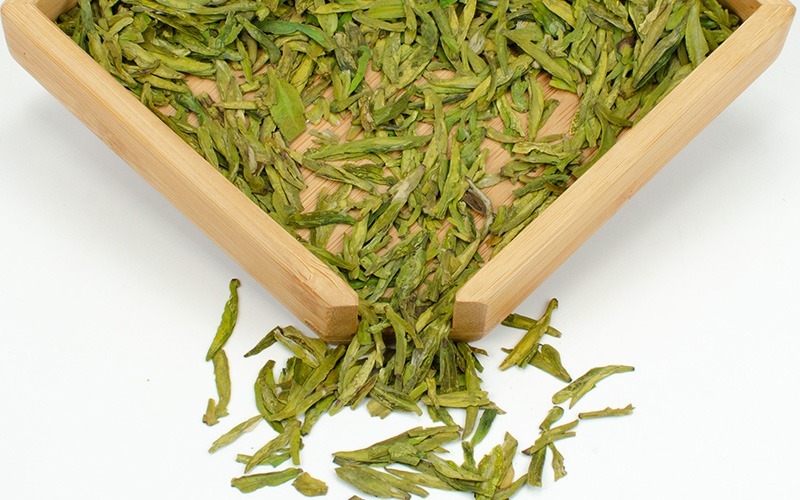
Dragon Well, also known as Longjing, is a revered green tea from the picturesque hills surrounding West Lake in Hangzhou, Zhejiang province, China. Renowned for its flat, spear-shaped leaves and rich history dating back centuries, Dragon Well green tea is celebrated for its delicate flavor, refreshing aroma, and exceptional quality. Let’s embark on a journey to uncover the captivating world of Dragon Well tea.
Origins and Cultivation:
Dragon Well green tea has a storied past that traces back to the Tang dynasty, with legends shrouding its origins in mystery and myth. According to local folklore, a benevolent dragon resided in a well near West Lake, protecting the village from drought and ensuring bountiful harvests. To honor the dragon’s spirit, villagers began cultivating tea bushes around the well, giving rise to the name “Dragon Well.” Today, Dragon Well tea is meticulously cultivated in the surrounding hillsides’ fertile soil and temperate climate, where the misty fog and gentle breezes create ideal growing conditions for tea plants.
Production Process:
Dragon Well green tea production is steeped in tradition and craftsmanship, carefully executing each step to preserve the tea’s natural flavor and aroma. After the tender tea buds and leaves are handpicked in the spring, they undergo a meticulous process of pan-firing in large woks to halt oxidation and retain their vibrant green color. This artisanal firing method imparts a distinct toasty aroma and nutty flavor to the tea, distinguishing Dragon Well from other green tea varieties. Skilled artisans gently shape the leaves using their hands or traditional bamboo presses, resulting in Dragon Well tea’s flat, uniform shape characteristic.
Flavor Profile:
Dragon Well green tea is prized for its delicate yet complex flavor profile, often described as sweet, nutty, and vegetal with a subtle hint of chestnut. It has a smooth, velvety texture and a clean, refreshing finish that lingers on the palate. The tea’s aroma is equally captivating, evoking notes of freshly cut grass, roasted chestnuts, and spring flowers. Dragon Well tea is known for its balanced and nuanced taste, making it a favorite among connoisseurs and casual tea drinkers.
Brewing Recommendations:
To fully appreciate Dragon Well green tea’s exquisite flavors, it is essential to brew it with care. Use filtered water heated to around 175-180°F (80-85°C) to avoid scorching the delicate leaves. Steep the tea for 2-3 minutes for the first infusion, adjusting the brewing time to suit personal preferences for subsequent infusions. You can enjoy Dragon Well tea alone or with light snacks such as fresh fruit or delicate pastries to complement its subtle flavors.
Cultural Significance:
Dragon Well green tea is a unique symbol of elegance, refinement, and harmony with nature in Chinese culture. It is often served to guests as a gesture of hospitality and respect, particularly during important social gatherings and ceremonial occasions. Dragon Well tea is also associated with tea appreciation, with connoisseurs admiring its exquisite appearance, aroma, and flavor in traditional tea ceremonies and tea-tasting rituals.
Conclusion:
In summary, Dragon Well (Longjing) green tea is a testament to Chinese tea culture’s rich cultural heritage and unparalleled craftsmanship. From its legendary origins to its delicate flavor and aroma, Dragon Well tea embodies the timeless elegance and natural beauty of the tea-growing regions surrounding West Lake in Hangzhou. Whether enjoyed as a daily ritual or savored during special occasions, Dragon Well green tea offers a sensory journey that delights the senses and nourishes the soul. It is a treasured beverage cherished by tea enthusiasts worldwide.
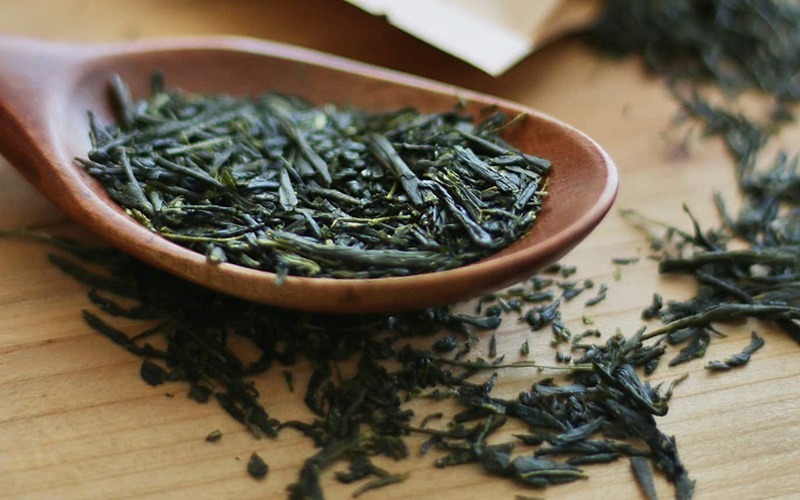
Discovering the Delicacy of Gyokuro Green Tea: Japan’s Jewel of Tea
Gyokuro, often called the “jewel dew” of Japanese green tea, is a prized and revered variety that epitomizes the pinnacle of tea craftsmanship. Renowned for its rich umami flavor, vibrant green color, and delicate aroma, Gyokuro is considered one of the world’s finest and most luxurious teas. Let’s embark on a journey to unravel the enchanting world of Gyokuro.
Origins and Cultivation:
Gyokuro traces its origins to Japan’s Uji region, where it has been cultivated for centuries under meticulous care and attention. The tea plants destined to become Gyokuro are shaded from direct sunlight for several weeks before harvesting, known as “kabuse” or shading. This shading technique stimulates the production of chlorophyll and amino acids in the tea leaves, resulting in a tea with a distinctively sweet and savory flavor profile.
Production Process:
The production of Gyokuro green tea is a labor-intensive process that requires skillful craftsmanship and precision. After the tea bushes have been shaded, the tender young leaves are handpicked with great care, selecting only the finest buds and leaves for processing. The leaves are steamed to prevent oxidation and preserve their vibrant green color before undergoing a meticulous rolling and drying process. Unlike other green teas, Gyokuro is typically left unrolled or lightly rolled to maintain its delicate flavor and appearance.
Flavor Profile:
Gyokuro is prized for its rich umami flavor, differentiating it from other green teas. It boasts a smooth, velvety texture and a subtle sweetness with hints of seaweed, steamed greens, and fresh grass. The tea’s aroma is enchanting, evoking oceanic freshness and vegetal richness. Gyokuro offers a complex and nuanced taste experience that unfolds with each sip, leaving a lingering sweetness on the palate.
Brewing Recommendations:
To fully appreciate the delicate flavors of Gyokuro green tea, it is essential to brew it with precision and care. Use filtered water heated to around 140-150°F (60-65°C), significantly lower than the boiling point, to avoid scorching the leaves and extracting bitterness. Steep the tea for 1-2 minutes in a small teapot or kyusu, adjusting the brewing time according to personal preference. Gyokuro is traditionally enjoyed as a ceremonial tea, sipped slowly, and savored for its exquisite taste and aroma.
Cultural Significance:
Gyokuro holds a special place in Japanese tea culture as a symbol of refinement, elegance, and hospitality. It is often served on special occasions and ceremonial gatherings, where the ritual of preparing and serving Gyokuro is considered an art form. The tea’s exquisite taste and appearance reflect the meticulous craftsmanship and reverence for nature inherent in Japanese tea traditions.
Conclusion:
Gyokuro green tea is a testament to Japanese tea culture’s artistry and craftsmanship. From its shaded cultivation to its rich umami flavor and delicate aroma, Gyokuro embodies the essence of elegance, refinement, and harmony. Whether enjoyed as a ceremonial tea or savored during quiet moments of reflection, Gyokuro offers a sensory journey that delights the senses and nourishes the soul, making it a cherished treasure among tea enthusiasts worldwide.
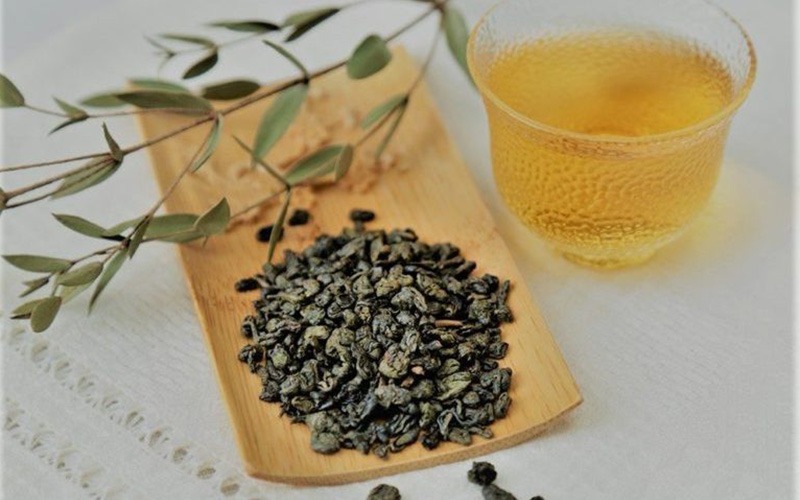
Gunpowder Green Tea: A Time-Honored Tradition
Gunpowder green tea, aptly named for its resemblance to small pellets of Gunpowder, is a classic and beloved green tea with a rich history dating back centuries. Gunpowder tea originated in China and has captivated enthusiasts worldwide with its bold flavor, distinctive appearance, and versatility. Let’s delve into the fascinating world of Gunpowder green tea.
Origins and Cultivation:
Gunpowder green tea is traditionally cultivated in the lush tea-growing regions of Zhejiang province, China. The fertile soil and favorable climate provide optimal conditions for tea cultivation. The tea plants, typically of the Camellia sinensis var. assamica variety, thrive in these mountainous areas, where skilled farmers and artisans carefully tend them.
Production Process:
Gunpowder green tea is produced using several meticulous steps to achieve its signature appearance and flavor. After the tea leaves are harvested, they are briefly withered to reduce moisture content before being steamed or pan-fired to halt oxidation. The leaves are then rolled into small, tight pellets resembling Gunpowder, which helps preserve freshness and aroma. This unique rolling technique also enhances the tea’s shelf life, making Gunpowder tea a popular choice for export and trade.
Flavor Profile:
Gunpowder green tea is prized for its robust flavor and slightly smoky aroma, which sets it apart from other green tea varieties. It has a bold, full-bodied taste with a hint of bitterness and a refreshing finish. The tea’s distinctive pellet shape allows it to unfurl slowly during brewing, releasing layers of flavor and aroma with each infusion. Gunpowder tea offers a satisfying and refreshing drinking experience that appeals to both seasoned and newcomers.
Brewing Recommendations:
To brew Gunpowder green tea, use filtered water heated to around 175-185°F (80-85°C) to avoid scorching the leaves and extracting bitterness. Place a teaspoon of tea pellets in a teapot or infuser and steep for 2-3 minutes for the first infusion, adjusting the brewing time to suit personal preference for subsequent infusions. Gunpowder tea can be enjoyed plain or with a touch of sweetener, such as honey or sugar, to complement its bold flavor.
Culinary Uses:
Gunpowder green tea is often used in culinary applications, particularly Moroccan cuisine. It serves as the base for traditional Moroccan mint tea, brewed with fresh mint leaves and sweetened with sugar to create a refreshing and aromatic beverage. Gunpowder tea’s robust flavor and pellet shape make it ideal for blending with herbs, spices, and other ingredients to create flavorful dishes and drinks.
Conclusion:
In summary, Gunpowder green tea is a time-honored tradition that continues to captivate tea lovers with its bold flavor, distinctive appearance, and versatility. Whether enjoyed on its own or used in culinary creations, Gunpowder tea offers a satisfying and stimulating drinking experience that celebrates the rich heritage of Chinese tea culture. With its robust flavor and enduring popularity, Gunpowder green tea remains a cherished treasure in the world of tea.
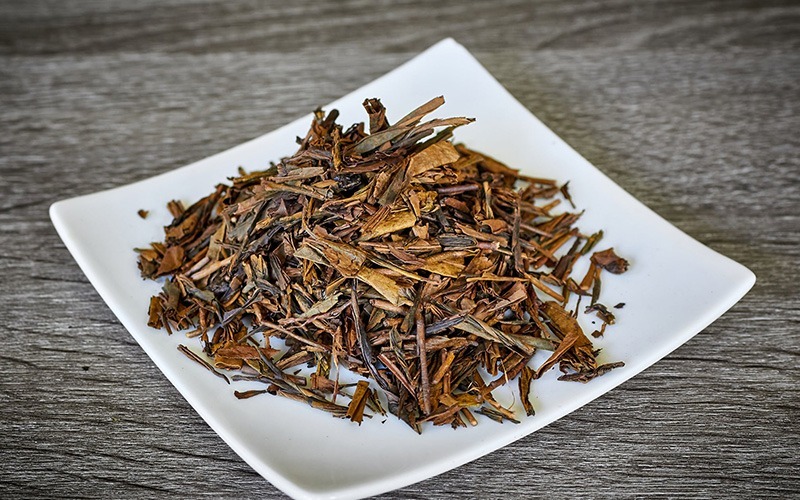
Hojicha Green Tea: A Comforting and Flavorful Brew
Hojicha green tea, a beloved variety in Japanese tea culture, offers a unique and comforting drinking experience with its distinctive roasted flavor and soothing aroma. Originating in Japan, Hojicha is cherished for its toasty notes, gentle sweetness, and low caffeine content, making it an ideal choice for any time of day. Let’s delve into the delightful world of Hojicha.
Origins and Cultivation:
Hojicha green tea has its roots in Kyoto, Japan, which was first developed in the 1920s to repurpose tea leaves that were considered lower-grade or past their prime. The tea leaves used to make Hojicha are typically sourced from the late harvest or lower elevation tea bushes, resulting in a milder flavor profile than other green teas.
Production Process:
The production of Hojicha green tea involves a unique roasting process that sets it apart from other green tea varieties. After the tea leaves are harvested and steamed to halt oxidation, they are roasted at high temperatures to develop their characteristic toasty flavor and aroma. The roasting process imparts a reddish-brown color to the leaves and removes much of the tea’s natural bitterness, resulting in a smooth and mellow brew.
Flavor Profile:
Hojicha green tea is prized for its comforting and approachable flavor, which is characterized by its nutty, caramel-like notes and subtle sweetness. The tea has a smooth, creamy texture and a mild, soothing finish that lingers on the palate. Unlike other green teas, Hojicha’s roasted flavor profile makes it less astringent and more accessible to those who may find traditional green tea too bitter or grassy.
Brewing Recommendations:
To brew Hojicha green tea, use filtered water heated to around 190-200°F (87-93°C), slightly higher than other green teas, to extract the full depth of flavor from the roasted leaves. Steep the tea for 1-2 minutes for the first infusion, adjusting the brewing time to suit personal preference for subsequent infusions. Hojicha can be enjoyed hot or cold and is often served with meals or as a comforting beverage to unwind after a long day.
Culinary Uses:
In addition to being enjoyed as a beverage, Hojicha green tea is often used in culinary applications, particularly in desserts and baked goods. Its toasty flavor pairs well with ingredients such as chocolate, nuts, and caramel, adding depth and complexity to sweet treats like cookies, cakes, and ice cream. Hojicha powder can make lattes, smoothies, and other creative beverages, offering a comforting and indulgent alternative to traditional green tea.
Conclusion:
In summary, Hojicha green tea offers a warm, comforting drinking experience that delights the senses and nourishes the soul. With its toasty flavor, soothing aroma, and gentle sweetness, Hojicha is a beloved beverage enjoyed by tea enthusiasts of all ages. Whether sipped on its own or used in culinary creations, Hojicha green tea invites us to slow down, savor the moment, and embrace the simple joys of life.

Genmaicha Green Tea: A Toasty and Nutty Delight
Genmaicha, often called “popcorn tea” or “brown rice tea,” is a unique and flavorful green tea with a rich history rooted in Japanese tea culture. Characterized by its distinctive blend of green tea leaves and roasted brown rice, Genmaicha offers a toasty aroma, nutty flavor, and comforting drinking experience that delights the senses. Let’s take a closer look at the delightful world of Genmaicha green tea:
Origins and Cultivation:
Genmaicha green tea originated in Japan. It was initially created to stretch limited supplies of green tea and add flavor to simple meals. The tea is typically made by blending high-quality sencha or bancha green tea leaves with toasted brown rice kernels, resulting in a unique and satisfying brew. Genmaicha is cultivated in tea-growing regions throughout Japan, where the climate and soil conditions contribute to its exceptional flavor and aroma.
Production Process:
Genmaicha green tea is produced using several meticulous steps to achieve its distinctive flavor profile. First, the brown rice kernels are roasted until they turn golden brown and develop a rich, nutty aroma. The roasted rice is mixed with green tea leaves, which may vary in grade and quality depending on the desired flavor and intensity. The tea leaves and rice are blended in precise proportions to create a harmonious balance of flavors, resulting in a savory and satisfying tea.
Flavor Profile:
Genmaicha green tea is prized for its unique flavor profile, which combines the fresh, grassy notes of green tea with the toasty, nutty flavors of roasted brown rice. The tea has a warm and comforting aroma reminiscent of freshly popped popcorn, with hints of caramel and roasted grains. It boasts a smooth, mellow taste, subtle sweetness, and a clean, refreshing finish. Genmaicha’s balanced flavor and gentle character make it a favorite among tea lovers of all ages.
Brewing Recommendations:
To brew Genmaicha green tea, use filtered water heated to around 175-180°F (80-85°C) to avoid scorching the delicate green tea leaves. Steep the tea for 1-2 minutes for the first infusion, adjusting the brewing time to suit personal preference for subsequent infusions. Genmaicha can be enjoyed hot or cold and is often served with meals or as a comforting beverage to unwind after a long day. It pairs well with various foods, from sushi and seafood to grilled meats and vegetables.
Culinary Uses:
Genmaicha green tea is often used in culinary applications, particularly Japanese cuisine. It serves as the base for traditional dishes such as ochazuke (rice served with tea) and genmaicha-flavored desserts like ice cream and cookies. Genmaicha’s toasty flavor and nutty undertones add depth and complexity to savory and sweet dishes, making it a versatile ingredient in the kitchen.
Conclusion:
In summary, Genmaicha green tea offers a delightful and flavorful drinking experience that celebrates the rich heritage of Japanese tea culture. From its origins as a humble blend of green tea and roasted rice to its widespread popularity as a comforting beverage enjoyed worldwide, Genmaicha continues to captivate tea enthusiasts with its unique flavor and aroma. Whether sipped on its own or incorporated into culinary creations, Genmaicha green tea invites us to savor life’s simple pleasures and enjoy a moment of warmth and tranquility.
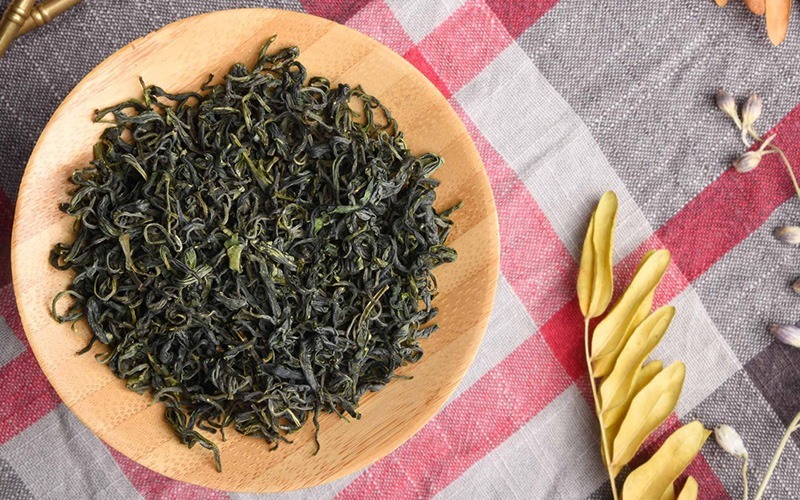
Bi Luo Chun Green Tea: A Fragrant Treasure from Dongting Mountain
Bi Luo Chun, or “Green Snail Spring,” is a prestigious green tea from Dongting Mountain near Lake Tai in Jiangsu Province, China. Revered for its delicate appearance, fresh aroma, and exquisite flavor, Bi Luo Chun has earned a reputation as one of the finest teas in China and holds a special place in Chinese tea culture. Let’s delve into the captivating world of Bi Luo Chun green tea.
Origins and Cultivation:
Bi Luo Chun green tea has a long and storied history dating back over 1,000 years, with legends surrounding its origins rooted in myth and folklore. According to local lore, the tea was named after the tender spring leaves, meticulously handpicked and rolled into small spiral shapes resembling snail shells. The tea bushes used to produce Bi Luo Chun are cultivated in the fertile soil and mild climate of Dongting Mountain, where the cool mountain air and misty fog create optimal growing conditions for tea plants.
Production Process:
Bi Luo Chun green tea production involves meticulously preserving the tea’s natural freshness, aroma, and flavor. After the tea leaves are handpicked in the early spring, they undergo a series of withering, fixing, rolling, and drying to enhance their appearance and taste. The leaves are gently rolled into tight spiral shapes, a technique that accentuates their delicate texture and aroma. Bi Luo Chun tea is known for its vibrant green color, sweet fragrance, and tender, velvety leaves, which are the hallmarks of its exceptional quality.
Flavor Profile:
Bi Luo Chun green tea is prized for its complex and nuanced flavor profile, which evolves with each steeping. It boasts a delicate sweetness with notes of chestnut, orchid, and fresh grass, complemented by a subtle floral aftertaste. The tea has a smooth, creamy texture with a refreshing, invigorating finish that lingers on the palate. Bi Luo Chun’s subtle yet distinctive flavor makes it a favorite among tea connoisseurs and enthusiasts seeking a refined and elegant drinking experience.
Brewing Recommendations:
Brewing Bi Luo Chun green tea with care is essential to appreciate its delicate flavors fully. Use filtered water heated to around 175-185°F (80-85°C) to avoid scorching the leaves and extracting bitterness. Steep the tea for 1-2 minutes for the first infusion, adjusting the brewing time to suit personal preference for subsequent infusions. Bi Luo Chun tea can be enjoyed plain or with a touch of sweetener, such as honey or sugar, to enhance its natural sweetness.
Cultural Significance:
In Chinese tea culture, Bi Luo Chun green tea symbolizes elegance, refinement, and hospitality. It is often served to guests as a gesture of goodwill and respect, particularly during important social gatherings and ceremonial occasions. Bi Luo Chun tea is also associated with the art of tea appreciation, with connoisseurs admiring its exquisite appearance, aroma, and flavor in traditional tea ceremonies and gatherings.
Conclusion:
Bi Luo Chun green tea is a testament to Chinese tea culture’s rich cultural heritage and exquisite craftsmanship. Bi Luo Chun embodies elegance, refinement, and harmony from its legendary origins to its delicate flavor and aroma. Whether enjoyed as a ceremonial tea or savored during quiet moments of reflection, Bi Luo Chun green tea offers a sensory journey that delights the senses and nourishes the soul, making it a cherished treasure among tea enthusiasts worldwide.
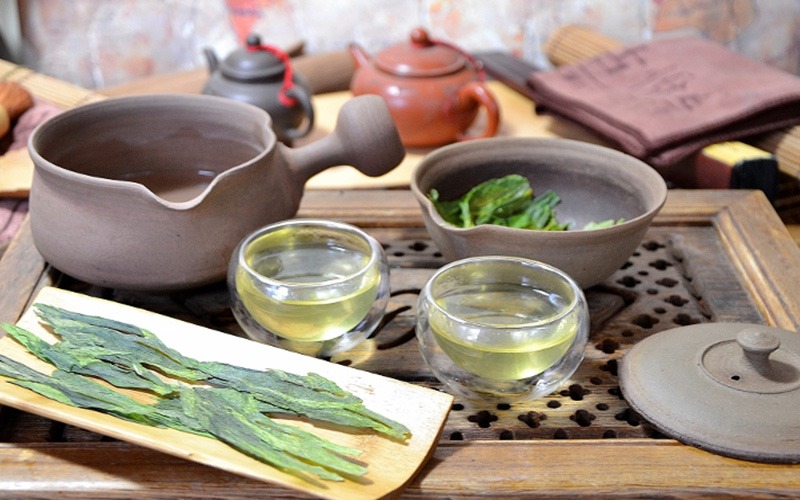
Tai Ping Hou Kui Green Tea: An Exquisite Tea from the Foothills of Huangshan
Tai Ping Hou Kui, also known as “Monkey King Tea,” is a renowned green tea from the foothills of Huangshan (Yellow Mountain) in Anhui Province, China. Celebrated for its long, flat leaves and delicate flavor profile, Tai Ping Hou Kui is esteemed as one of China’s rarest and most prized teas, embodying the artistry and craftsmanship of Chinese tea culture. Let’s delve into the fascinating world of Tai Ping Hou Kui green tea:
Origins and Cultivation:
Tai Ping Hou Kui green tea has a history dating back over 100 years, with its origins traced to the small village of Hou Keng in the scenic region of Huangshan. The tea is cultivated in the mist-shrouded mountains and fertile valleys surrounding Huangshan, where the unique terroir and microclimate contribute to its exceptional flavor and aroma. Tai Ping Hou Kui tea bushes are grown at high altitudes, allowing them to absorb the nutrients and minerals from the rich soil, resulting in tea leaves of unparalleled quality.
Production Process:
The production of Tai Ping Hou Kui green tea is a labor-intensive process that requires skillful craftsmanship and meticulous attention to detail. After the tea leaves are handpicked in the early spring, they undergo a series of precise steps to preserve their natural freshness and appearance. The leaves are carefully sorted and graded before being withered, fixed, and shaped using a traditional hand-pressing technique. Each tea leaf is flattened and straightened by hand, resulting in long, slender leaves with a distinctive appearance.
Flavor Profile:
Tai Ping Hou Kui green tea is prized for its delicate and nuanced flavor profile, which combines floral, vegetal, and nutty notes with a subtle sweetness. The tea has a smooth, velvety texture with a refreshing, invigorating finish that lingers on the palate. Tai Ping Hou Kui’s complex flavor and aroma evolve with each steeping, revealing layers of depth and complexity that captivate the senses. It is a tea to be savored slowly, allowing its exquisite taste to unfold with each sip.
Brewing Recommendations:
Brewing Tai Ping Hou Kui green tea with care is essential to appreciate its delicate flavors fully. Use filtered water heated to around 175-185°F (80-85°C) to avoid scorching the delicate leaves and extracting bitterness. Steep the tea for 2-3 minutes for the first infusion, adjusting the brewing time to suit personal preference for subsequent infusions. Tai Ping Hou Kui tea can be enjoyed plain or with a touch of sweetener, such as honey or sugar, to enhance its natural sweetness.
Cultural Significance:
Tai Ping Hou Kui green tea holds a special place in Chinese tea culture as a symbol of elegance, refinement, and prestige. It is often presented as a gift or served to honored guests as a gesture of goodwill and respect. Tai Ping Hou Kui tea is also celebrated for its aesthetic beauty, with its long, flat leaves admired for their graceful appearance and delicate texture. It is a tea that embodies the spirit of Chinese tea culture, honoring tradition while embracing innovation.
Conclusion:
In summary, Tai Ping Hou Kui green tea is a masterpiece of Chinese tea craftsmanship, reflecting the artistry and skill of generations of tea farmers and artisans. From its origins in the misty mountains of Huangshan to its delicate flavor and exquisite appearance, Tai Ping Hou Kui embodies the essence of Chinese tea culture. Whether enjoyed as a ceremonial tea or savored during quiet moments of reflection, Tai Ping Hou Kui offers a sensory journey that delights the senses and nourishes the soul, making it a treasured treasure among tea enthusiasts worldwide.
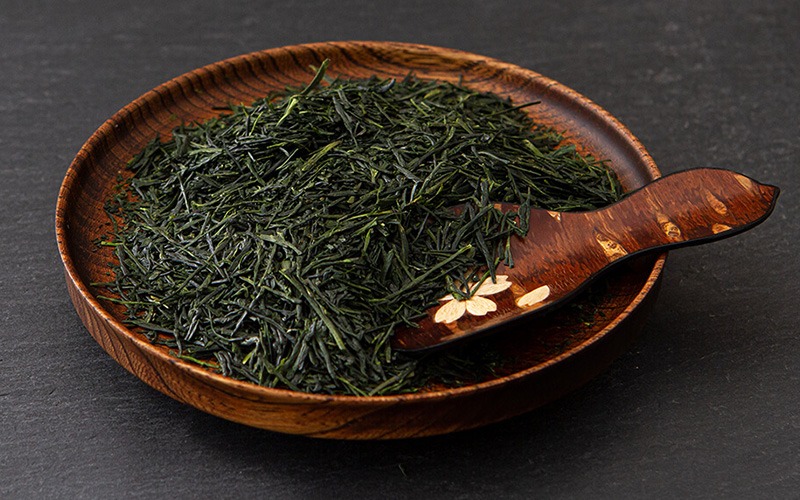
Shincha Green Tea: Embracing the Essence of Spring
Shincha, also known as “New Tea” or “First Flush Tea,” is a prized Japanese green tea celebrated for its vibrant flavor, fresh aroma, and symbolic significance. This exquisite tea marks the beginning of the spring harvest season, offering a unique and fleeting opportunity to experience the essence of the new growth. Let’s explore the captivating world of Shincha green tea.
Origins and Harvesting:
Shincha is harvested from the first flush of young tea leaves in early spring, typically around late April to early May in Japan. These tender leaves, picked with great care by skilled tea farmers, represent the new growth of the tea bushes after their winter dormancy. The timing of the Shincha harvest is crucial, as the leaves are at their peak freshness and vitality, capturing the essence of spring in every sip.
Production Process:
Shincha green tea’s production process is similar to other Japanese green teas but focuses on preserving the natural freshness and vibrancy of the first flush leaves. After harvesting, the leaves are steamed to halt oxidation and lock in their vibrant green color and fresh flavor. They are then rolled, shaped, and dried to create the final product. Unlike other green teas, Shincha is often minimally processed to highlight the delicate nuances of the new growth.
Flavor Profile:
Shincha green tea is prized for its bright, grassy flavor and refreshing aroma, which evoke the vitality and energy of spring. It boasts a crisp and clean taste with notes of umami and sweetness reminiscent of freshly cut grass and young vegetables. The tea has a smooth and velvety texture, with a lingering freshness that invigorates the senses. Shincha’s flavor profile reflects the season, capturing the essence of new beginnings and renewal.
Brewing Recommendations:
Brewing Shincha green tea carefully is essential to appreciate its delicate flavors fully. Use filtered water heated to around 160-175°F (70-80°C) to avoid scorching the tender leaves and extracting bitterness. Steep the tea for 1-2 minutes for the first infusion, adjusting the brewing time to suit personal preference for subsequent infusions. Shincha can be enjoyed plain or with a touch of sweetener, such as honey or sugar, to enhance its natural sweetness.
Cultural Significance:
In Japanese tea culture, Shincha symbolizes new beginnings, vitality, and appreciation for nature’s cycles. It is often celebrated with special ceremonies and events, where tea enthusiasts gather to welcome spring and savor the fleeting beauty of the first flush harvest. Shincha is also cherished for its role in fostering a connection to the natural world, encouraging mindfulness and gratitude for the earth’s gifts.
Conclusion:
In summary, Shincha green tea embodies the essence of springtime in Japan, offering a sensory journey that celebrates the beauty of new growth and renewal. From its vibrant flavor and fresh aroma to its symbolic significance in Japanese culture, Shincha is a treasure to be cherished and savored. Whether enjoyed in a traditional tea ceremony or as a simple pleasure in everyday life, Shincha invites us to embrace the spirit of spring and delight in the season’s joys.

Anji Bai Cha Green Tea: The Rare White Tea from Anji County
Anji Bai Cha, often called “Anji White Tea,” is a rare and highly prized green tea from Anji County in Zhejiang Province, China. Renowned for its unique appearance, delicate flavor, and numerous health benefits, Anji Bai Cha stands out as one of the most sought-after teas in the world. Let’s delve into the intriguing world of Anji Bai Cha green tea:
Origins and Cultivation:
Anji Bai Cha green tea originates in the lush bamboo forests and misty mountains of Anji County, where the tea bushes thrive in the cool, foggy climate and fertile soil. Its distinctive pale green color, attributed to the high chlorophyll content of the tea leaves, sets Anji Bai Cha apart. Despite its name, Anji Bai Cha is a green tea, not a white one, harvested from the early spring flush of tender leaves.
Harvesting and Processing:
The harvesting of Anji Bai Cha is a meticulous process that requires careful timing and attention to detail. The tea leaves are handpicked in the early spring, typically around late March to early April, when they are at their peak freshness and vitality. After harvesting, the leaves undergo a brief withering process to reduce moisture content before being quickly steamed or pan-fired to halt oxidation. This minimal processing helps preserve the tea’s natural flavors and delicate aroma.
Flavor Profile:
Anji Bai Cha green tea is prized for its subtle and nuanced flavor profile, which combines vegetal, floral, and sweet notes with a hint of umami. The tea has a smooth, velvety texture with a refreshing, clean finish that lingers on the palate. Unlike other green teas, Anji Bai Cha is known for its lack of bitterness and astringency, making it exceptionally mild and easy to drink. Tea can be enjoyed throughout the day, offering a gentle and soothing experience with each sip.
Brewing Recommendations:
Brewing Anji Bai Cha green tea with care is essential to fully appreciating its delicate flavors. Use filtered water heated to around 160-175°F (70-80°C) to avoid scorching the tender leaves and extracting bitterness. Steep the tea for 1-2 minutes for the first infusion, adjusting the brewing time to suit personal preference for subsequent infusions. To enhance its natural sweetness, Anji Bai Cha can be enjoyed plain or with a touch of sweetener, such as honey or sugar.
Cultural Significance:
Anji Bai Cha green tea holds a special place in Chinese tea culture as a symbol of purity, elegance, and refinement. It is often presented as a gift or served to honored guests as a gesture of goodwill and respect. Anji Bai Cha is also celebrated for promoting harmony between humans and nature, with its cultivation practices emphasizing sustainability and environmental stewardship. It is a tea that embodies the spirit of balance and tranquility, inviting us to slow down and savor life’s simple pleasures.
Conclusion:
In summary, Anji Bai Cha green tea is a rare and exquisite treasure from the mountains of Anji County, offering a sensory journey that delights the senses and nourishes the soul. From its delicate flavor and pale green color to its numerous health benefits and cultural significance, Anji Bai Cha is a testament to the artistry and craftsmanship of Chinese tea culture. Whether enjoyed in a traditional tea ceremony or as a simple pleasure in everyday life, Anji Bai Cha invites us to embrace the beauty of simplicity and find harmony in the present moment.

Laoshan Green Tea: A Revered Gem from the Foothills of Laoshan Mountain
Laoshan Green Tea is a distinguished variety of green tea originating from the foothills of Laoshan Mountain in Shandong Province, China. Revered for its unique terroir, rich flavor, and centuries-old cultivation techniques, Laoshan Green Tea is a testament to the craftsmanship and tradition of Chinese tea production. Let’s delve into the captivating world of Laoshan Green Tea:
Origins and Terroir:
Laoshan Mountain, located along the eastern coast of China, boasts a pristine environment characterized by mineral-rich soil, clean air, and abundant rainfall. It is within this idyllic setting that Laoshan Green Tea is cultivated, with tea gardens nestled amidst lush forests and misty peaks. The unique terroir of Laoshan Mountain, coupled with its favorable climate and geography, imparts distinctive qualities to the tea, resulting in a complex and captivating flavor profile.
Cultivation and Harvesting:
Laoshan Green Tea cultivation is labor-intensive and requires meticulous care and attention to detail. The tea bushes, predominantly of the Longjing and Mao Feng cultivars, are cultivated using traditional methods passed down through generations. During the first flush of growth, the leaves are handpicked in early spring, typically around late March to early April. This careful selection ensures that only the tenderest and most flavorful leaves are harvested, contributing to the tea’s exceptional quality and taste.
Processing Techniques:
Once harvested, the tea leaves undergo a series of precise processing techniques to preserve their natural freshness and flavor. The leaves are withered, steamed, or pan-fired, rolled, and dried, following time-honored methods that have been refined over centuries. These traditional processing techniques enhance the tea’s aroma, texture, and taste, resulting in a fragrant and flavorful tea.
Flavor Profile:
Laoshan Green Tea is prized for its complex and nuanced flavor profile, which varies depending on harvest time, cultivar, and processing methods. Generally, the tea exhibits a delicate sweetness with hints of chestnut, vegetal notes, and a subtle umami undertone. It has a smooth and velvety texture with a refreshing finish that lingers on the palate. The tea’s flavor evolves with each infusion, revealing new layers of complexity and depth with every sip.
Brewing Recommendations:
Brewing Laoshan Green Tea with care is essential to fully appreciating its flavors. Heat filtered water to around 160-175°F (70-80°C) to avoid scorching the delicate leaves. Steep the tea for 1-2 minutes for the first infusion, adjusting the brewing time to suit personal preference for subsequent infusions. To enhance its natural sweetness, Laoshan Green Tea can be enjoyed plain or with a touch of sweetener, such as honey or sugar.
Cultural Significance:
Laoshan Green Tea holds a special place in Chinese tea culture as a symbol of tradition, craftsmanship, and reverence for nature. It is often presented as a gift or served to honored guests as a gesture of hospitality and respect. Laoshan Green Tea is also celebrated for promoting sustainability and environmental stewardship. Tea farmers employ eco-friendly practices to preserve the natural beauty of Laoshan Mountain for future generations.
Conclusion:
In summary, Laoshan Green Tea is a revered gem from the foothills of Laoshan Mountain, offering a sensory journey that delights the senses and nourishes the soul. From its rich flavor and fragrant aroma to its cultural significance and health benefits, Laoshan Green Tea embodies the essence of Chinese tea culture. Whether enjoyed in a traditional tea ceremony or as a simple pleasure in everyday life, Laoshan Green Tea invites us to savor the beauty of nature and embrace the timeless tradition of tea appreciation.
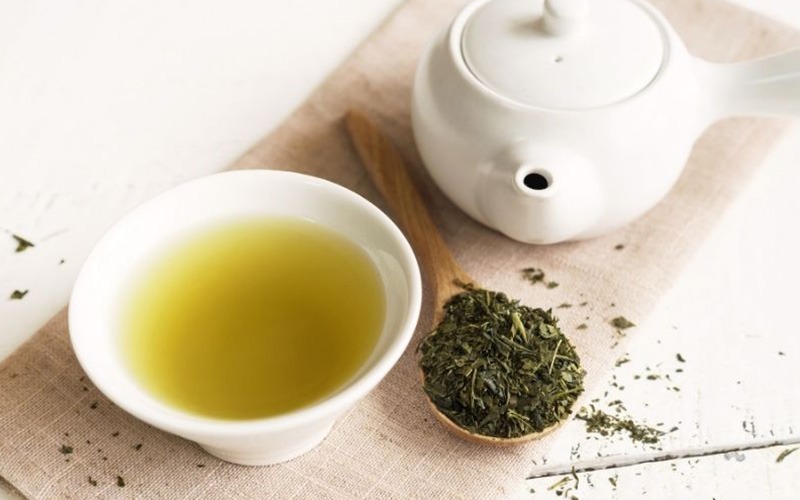
Kabusecha Green Tea: A Shade-Grown Delicacy from Japan
Kabusecha is a distinctive type of green tea from Japan, renowned for its delicate flavor, vibrant color, and unique cultivation process. This tea is characterized by its shade-grown leaves, which impart a nuanced taste and aroma that sets it apart from other green teas. Let’s explore the fascinating world of Kabusecha green tea:
Origins and Cultivation:
Kabusecha green tea is primarily produced in the regions of Uji and Shizuoka in Japan, where the climate and terrain are conducive to tea cultivation. The tea bushes that produce Kabusecha are typically grown in nutrient-rich soil and benefit from ample sunlight and rainfall. However, what distinguishes Kabusecha from other green teas is its shading process, which involves covering the tea bushes with shade cloth for a while before harvesting.
Shading Process:
The shading process, known as “kabuse,” is a crucial aspect of Kabusecha production. Approximately two to three weeks before the scheduled harvest, the tea bushes are covered with shade cloth or bamboo screens to block out sunlight. This shading technique promotes the growth of tender, shade-grown leaves with higher concentrations of chlorophyll and amino acids, resulting in a sweeter, more umami-rich flavor profile. It also reduces the tea’s bitterness and astringency, producing a smoother and more balanced cup.
Harvesting and Processing:
Once the tea bushes have been shaded for the desired period, the leaves are carefully handpicked during the first flush of growth, typically in the spring. The leaves are then quickly steamed or pan-fired to halt oxidation and preserve their vibrant green color and fresh aroma. After processing, Kabusecha green tea may undergo additional steps such as rolling, shaping, and drying to enhance its appearance and flavor. The result is a tea that is both visually stunning and exceptionally flavorful.
Flavor Profile:
Kabusecha green tea is prized for its complex and nuanced flavor profile, which combines vegetal, floral, and umami notes with a subtle sweetness. The tea has a smooth, silky texture with a refreshing, invigorating finish that lingers on the palate. Unlike other green teas, Kabusecha’s shading process yields a milder and more delicate tea, making it a favorite among tea enthusiasts who appreciate its subtle yet distinctive taste.
Brewing Recommendations:
To fully appreciate the delicate flavors of Kabusecha green tea, it is essential to brew it carefully. Heat filtered water to around 160-175°F (70-80°C) to avoid scorching the tender leaves. Steep the tea for 1-2 minutes for the first infusion, adjusting the brewing time to suit personal preference for subsequent infusions. Kabusecha can be enjoyed plain or with a touch of sweetener, such as honey or sugar, to enhance its natural sweetness.
Cultural Significance:
In Japanese tea culture, Kabusecha green tea is a unique symbol of refinement, craftsmanship, and reverence for nature. It is often served in traditional tea ceremonies and gatherings, where enthusiasts and novices alike appreciate its delicate flavor and elegant appearance. Kabusecha is also celebrated for promoting sustainability and environmental stewardship, with tea farmers employing eco-friendly practices to preserve the natural beauty of Japan’s tea-growing regions.
Conclusion:
In summary, Kabusecha green tea is a shade-grown delicacy from Japan, offering a sensory experience that delights the senses and nourishes the soul. From its nuanced flavor and vibrant color to its cultural significance and health benefits, Kabusecha embodies the essence of Japanese tea culture. Whether enjoyed in a traditional tea ceremony or as a simple pleasure in everyday life, Kabusecha invites us to savor the beauty of nature and embrace the timeless tradition of tea appreciation.
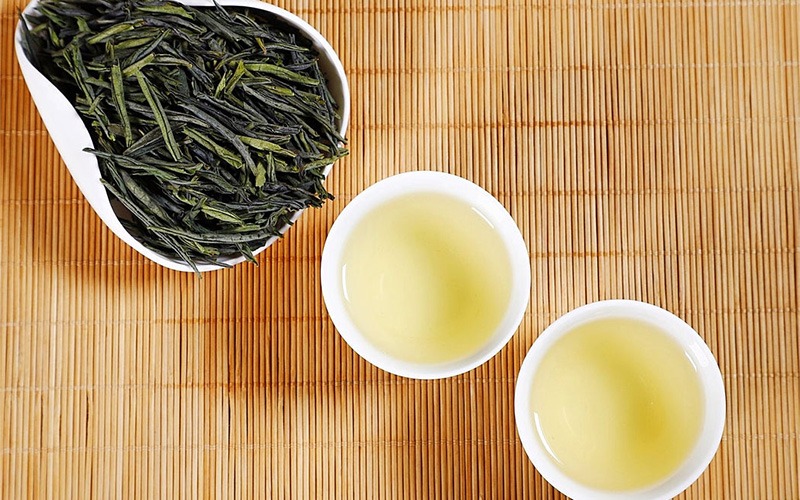
Lu’an Melon Seed Green Tea: A Treasured Heirloom from Anhui Province
Lu’an Melon Seed Green Tea, also known as Lu’an Gua Pian, is a prestigious green tea originating from the serene landscapes of Lu’an City in Anhui Province, China. This unique tea stands out for its distinctive appearance, delicate flavor, and rich cultural heritage, making it a cherished treasure among tea connoisseurs worldwide. Let’s embark on a journey to discover the captivating essence of Lu’an Melon Seed Green Tea:
Origins and Cultivation:
Lu’an Melon Seed Green Tea traces its roots back to the mist-shrouded mountains and fertile valleys of Lu’an City, where the tea bushes thrive in the region’s temperate climate and rich soil. The name “melon seed” refers to the flattened shape of the tea leaves, which resemble the seeds of a melon. The tea bushes used to produce Lu’an Melon Seed Green Tea are predominantly of the “Shi Da Cha” cultivar, carefully tended by skilled tea farmers following time-honored traditions.
Harvesting and Processing:
The harvesting of Lu’an Melon Seed Green Tea is a meticulous process that requires expert knowledge and careful timing. The tea leaves are handpicked during the late spring and early summer months when they peak in freshness and vitality. Unlike other green teas, which typically include the bud and first leaf, Lu’an Melon Seed Green Tea is made using only the second and third leaves of the tea plant. After harvesting, the leaves undergo a series of precise processing steps. It includes withering, fixing, shaping, and drying to preserve their natural flavor and aroma.
Flavor Profile:
Lu’an Melon Seed Green Tea is renowned for its unique flavor profile, characterized by subtle sweetness, floral undertones, and refreshing vegetal notes. The tea has a smooth and mellow taste, with a clean finish that lingers on the palate. Unlike some green teas that may exhibit bitterness or astringency, Lu’an Melon Seed Green Tea is prized for its gentle and balanced flavor, making it a delightful choice for casual and discerning tea enthusiasts.
Appearance:
One of the most distinctive features of Lu’an Melon Seed Green Tea is its appearance. The tea leaves are carefully handcrafted into small, flat shapes that resemble melon seeds, hence the name. The leaves are uniform in size and color, with a vibrant green hue that reflects the tea’s freshness and quality. When brewed, Lu’an Melon Seed Green Tea infuses into a clear, pale green liquor, enhancing its visual appeal.
Brewing Recommendations:
To fully appreciate its delicate flavors, it is essential to brew Lu’an Melon Seed Green Tea properly. Heat filtered water to around 175-185°F (80-85°C) to avoid scalding the delicate leaves. Steep the tea for 2-3 minutes for the first infusion, adjusting the brewing time to suit personal preference for subsequent infusions. Lu’an Melon Seed Green Tea can be enjoyed plain or with a sweetener, such as honey or sugar, to enhance its natural sweetness.
Cultural Significance:
Lu’an Melon Seed Green Tea is a special symbol of tradition, craftsmanship, and regional pride in Chinese tea culture. Generations of tea enthusiasts have cultivated and enjoyed it for centuries, valuing its unique flavor and cultural heritage. It is often served during important social gatherings, celebrations, and ceremonies, where all appreciate its elegance and sophistication.
Conclusion:
Lu’an Melon Seed Green Tea is a treasured heirloom from Anhui Province, offering a sensory experience that delights the senses and nourishes the soul. From its delicate flavor and distinctive appearance to its rich cultural heritage and health benefits, Lu’an Melon Seed Green Tea embodies the essence of Chinese tea culture. Whether enjoyed in a traditional tea ceremony or as a simple pleasure in everyday life, Lu’an Melon Seed Green Tea invites us to savor the beauty of nature and embrace the timeless tradition of tea appreciation.
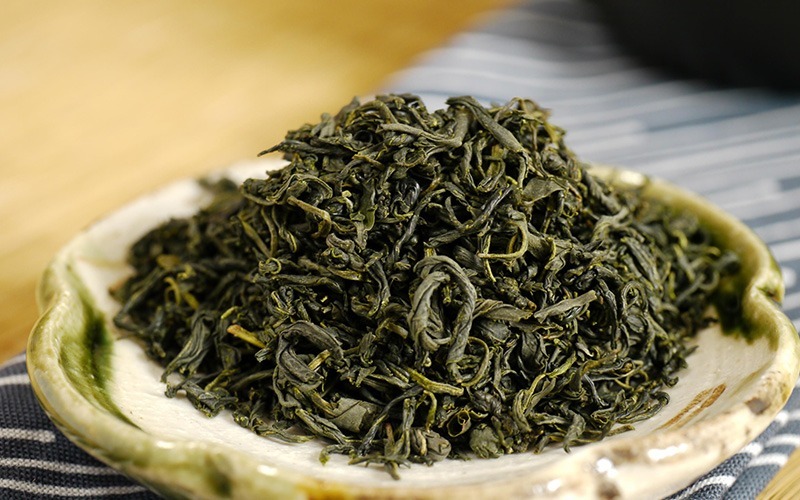
Guricha Green Tea: Japan’s Twisted Treasure
Guricha, also known as Tamaryokucha or “Curly Green Tea,” is a unique and flavorful green tea originating from Japan. This tea stands out for its distinctive appearance, characterized by tightly rolled or twisted leaves, and its refreshing taste, which captivates the palate with its balance of sweetness and umami. Let’s take a closer look at the fascinating world of Guricha green tea:
Origins and Cultivation:
Guricha green tea is primarily produced in the Kyushu region of Japan, particularly in the prefectures of Kagoshima and Miyazaki. The tea bushes that produce Guricha are typically grown in nutrient-rich soil on hillsides and mountainsides, benefiting from abundant sunlight and cool temperatures. The cultivation of Guricha follows traditional Japanese farming methods, emphasizing meticulous care and attention to detail at every stage of the tea’s growth and development.
Harvesting and Processing:
The harvesting of Guricha green tea typically takes place in the early spring, during the first flush of growth. The tea leaves are handpicked by skilled farmers, who carefully select only the tenderest and most flavorful leaves for processing. Unlike other green teas, Guricha undergoes a unique shaping process involving twisting or curling the leaves into tight spirals or coils. This distinctive shaping technique helps to preserve the tea’s natural flavor and aroma while enhancing its visual appeal.
Flavor Profile:
Guricha green tea is prized for its refreshing and well-balanced flavor profile, which combines sweet, vegetal, and umami notes with a hint of nuttiness. The tea has a smooth and silky texture with a clean finish that lingers on the palate. Unlike some green teas that may exhibit bitterness or astringency, Guricha is known for its gentle and mellow taste, making it a favorite among tea enthusiasts who appreciate its nuanced complexity.
Appearance:
One of Guricha green tea’s most striking features is its unique appearance. The tightly rolled or twisted leaves unfurl when steeped, revealing their vibrant green color and delicate structure. The leaves may vary in size and shape, with some appearing as small pellets or coils while others resemble elongated spirals. When brewed, Guricha infuses into a clear, pale green liquor, further enhancing its visual appeal.
Brewing Recommendations:
To fully appreciate Guricha green tea’s delicate flavors, it is important to brew it properly. Heat filtered water to around 160-175°F (70-80°C) to avoid scalding the delicate leaves. Steep the tea for 1-2 minutes for the first infusion, adjusting the brewing time to suit personal preference for subsequent infusions. Guricha can be enjoyed plain or with a touch of sweetener, such as honey or sugar, to enhance its natural sweetness.
Cultural Significance:
Guricha green tea is a unique symbol of tradition, craftsmanship, and regional pride in Japanese tea culture. It is often served during critical social gatherings, celebrations, and ceremonies, where all appreciate its unique flavor and appearance. Guricha’s twisted leaves and vibrant green color make it a visually stunning addition to any tea ceremony or tea-tasting event.
Conclusion:
In summary, Guricha green tea is a twisted treasure from Japan, offering a sensory experience that delights the senses and nourishes the soul. From its unique appearance and refreshing flavor to its rich cultural heritage and health benefits, Guricha embodies the essence of Japanese tea culture. Whether enjoyed in a traditional tea ceremony or as a simple pleasure in everyday life, Guricha green tea invites us to savor the beauty of nature and embrace the timeless tradition of tea appreciation.
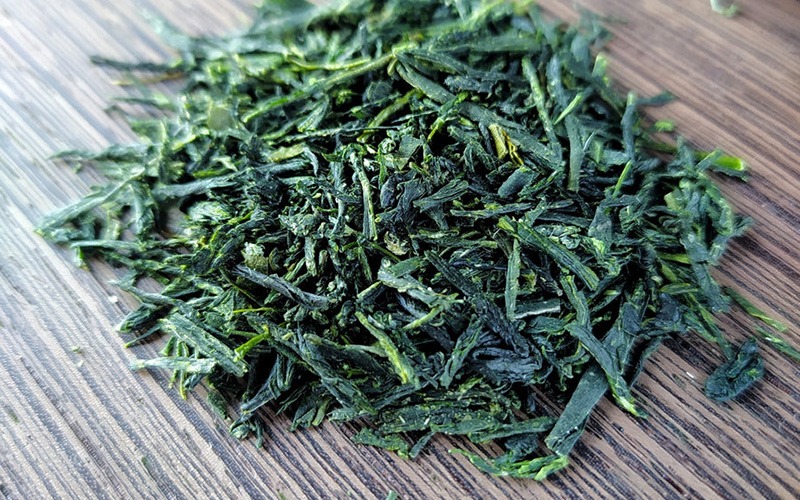
Uji Gyokuro Green Tea: Japan’s Jewel of the Green Tea World
Uji Gyokuro, often revered as the pinnacle of Japanese green tea, is a highly prized and luxurious tea renowned for its vibrant green color, rich umami flavor, and exquisite aroma. This esteemed tea originates from the Uji region in Kyoto Prefecture, Japan, where it is meticulously cultivated and crafted by skilled artisans. Let’s delve into the captivating world of Uji Gyokuro green tea.
Origins and Cultivation:
Uji Gyokuro traces its origins back to the Uji region, which boasts a long and storied history of tea cultivation dating back over a thousand years. The region’s fertile soil, misty climate, and meticulous farming practices contribute to the unique terroir that produces exceptional tea. The tea bushes used to make Gyokuro are shaded for several weeks before harvest, a process known as “gyo” or shading, which encourages the growth of tender, shade-grown leaves with higher concentrations of chlorophyll and amino acids.
Shading Process:
The shading process is a defining characteristic of Gyokuro production, as it helps to enhance the tea’s flavor, sweetness, and umami notes. Approximately three weeks before the scheduled harvest, the tea bushes are covered with shade cloth or bamboo screens to block sunlight. This shading technique stimulates the production of amino acids, particularly L-theanine, which contributes to Gyokuro’s distinctive savory flavor and smooth texture.
Harvesting and Processing:
Harvesting Gyokuro green tea is a labor-intensive process that requires careful timing and precision. Skilled farmers handpick the tea leaves in early spring when they are at their peak freshness and vitality. Only the tenderest and most flavorful buds and leaves are selected for Gyokuro production, ensuring exceptional quality and taste. After harvesting, the leaves undergo a meticulous process, including steaming, rolling, shaping, and drying, preserving their vibrant green color and delicate flavor.
Flavor Profile:
Uji Gyokuro is celebrated for its complex and nuanced flavor profile. Its rich, buttery texture and sweet, vegetal taste with pronounced umami notes characterize it. The tea has a smooth, velvety mouthfeel and a lingering sweetness that coats the palate. Unlike other green teas, Gyokuro’s shading process results in an exceptionally mellow and full-bodied tea with a depth of flavor that evolves with each sip.
Brewing Recommendations:
Brewing Uji Gyokuro green tea with care is essential to fully appreciating its delicate flavors. Heat filtered water to around 140-150°F (60-65°C) to avoid scalding the delicate leaves. Steep the tea for 2-3 minutes for the first infusion, adjusting the brewing time to suit personal preference for subsequent infusions. Gyokuro can be enjoyed plain or with a touch of sweetener, such as honey or sugar, to enhance its natural sweetness.
Cultural Significance:
In Japanese tea culture, Uji Gyokuro symbolizes refinement, elegance, and sophistication. It is often served during formal tea ceremonies, where connoisseurs and novices appreciate its exquisite flavor and aroma. Gyokuro is also prized for fostering a connection to nature and promoting mindfulness and tranquility.
Conclusion:
In summary, Uji Gyokuro green tea is Japan’s jewel of the green tea world. It offers a sensory experience that delights the senses and nourishes the soul. From its vibrant green color and rich umami flavor to its cultural significance and health benefits, Gyokuro embodies the essence of Japanese tea culture. Whether enjoyed in a traditional tea ceremony or as a simple pleasure in everyday life, Gyokuro invites us to savor the beauty of nature and embrace the timeless tradition of tea appreciation.
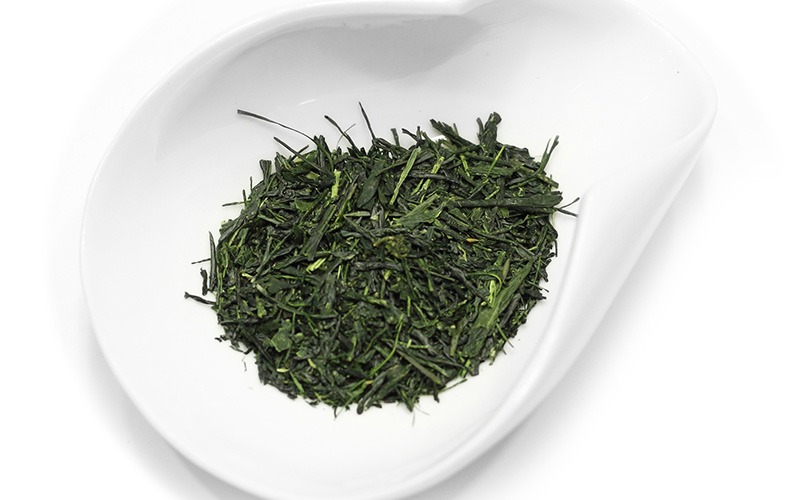
Meiryoku Matcha Green Tea: Unveiling the Power of Japanese Elegance
Meiryoku Matcha green tea is a beacon of Japanese elegance and tradition, celebrated for its vibrant green hue, rich umami flavor, and myriad health benefits. Matcha is special in Japanese tea culture as a powdered green tea, symbolizing harmony, mindfulness, and refined taste. Let’s embark on a journey to uncover the captivating essence of Meiryoku Matcha:
Origins and Cultivation:
Meiryoku Matcha originates from Japan’s lush tea fields, where the tea bushes are carefully tended to in Uji, Nishio, and Shizuoka regions. Matcha cultivation follows meticulous farming practices, including shading the tea bushes for several weeks before harvest to enhance the production of chlorophyll and amino acids. This shading process, known as “kabuse,” produces leaves rich in flavor and nutrients.
Harvesting and Processing:
Harvesting Meiryoku Matcha involves handpicking the youngest and tenderest tea leaves, which are then steamed to halt oxidation and preserve their vibrant green color. After boiling, the leaves are carefully dried and deveined before being ground into a fine powder using traditional stone mills. This labor-intensive process ensures that the Matcha retains its flavor, aroma, and nutritional value.
Flavor Profile:
Meiryoku Matcha is revered for its rich and complex flavor profile, which balances sweetness, bitterness, and umami. The tea has a smooth and creamy texture, with a lingering sweetness that coats the palate. Unlike other green teas, Matcha is consumed entirely, allowing for a more intense and concentrated flavor experience. L-theanine, an amino acid, contributes to Matcha’s calming and relaxing properties, making it a favorite choice for meditation and mindfulness practices.
Preparation and Brewing:
To prepare Meiryoku Matcha, a small amount of the powdered tea is whisked with hot water using a bamboo whisk, known as a “chasen,” until frothy and well combined. The resulting beverage, known as “koicha” or “usucha,” can be enjoyed plain or with a sweetener, such as honey or sugar, to enhance its natural sweetness. Matcha can also be versatile in culinary creations, including lattes, smoothies, and desserts.
Cultural Significance:
In Japanese tea culture, Meiryoku Matcha is a special symbol of refinement, tranquility, and hospitality. It is often served during formal tea ceremonies, where its vibrant green color and graceful aroma create an atmosphere of harmony and reverence. Matcha is also used in cultural rituals, such as the Japanese tea ceremony, where the preparation and serving of the tea are considered art forms in themselves.
Conclusion:
In summary, Meiryoku Matcha green tea is a testament to the elegance and sophistication of Japanese tea culture. It offers a sensory experience that delights the senses and nourishes the soul. From its vibrant green color and rich umami flavor to its myriad health benefits and cultural significance, Matcha embodies the essence of Japanese tradition and craftsmanship. Whether enjoyed in a formal tea ceremony or as a simple pleasure in everyday life, Meiryoku Matcha invites us to savor the beauty of nature and embrace the timeless ritual of tea appreciation.
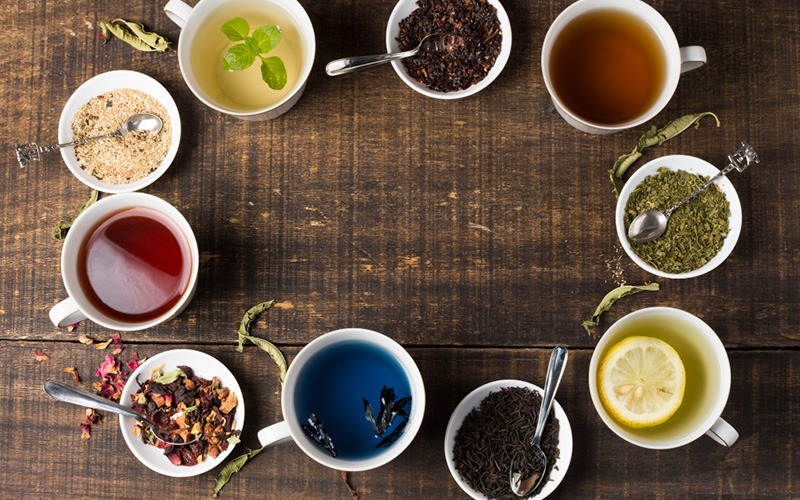
Exploring the World of Herbal Green Teas: A Fusion of Health and Flavor
Herbal green teas offer a delightful fusion of the refreshing taste of green tea with the aromatic and therapeutic properties of various herbs and botanicals. These unique blends combine the antioxidant-rich goodness of green tea with the natural benefits of herbs, creating a beverage that not only tantalizes the taste buds but also promotes overall well-being. Let’s delve into the diverse world of herbal green teas:
Origins and Ingredients:
Herbal green teas feature many ingredients, ranging from classic herbs like mint and chamomile to exotic botanicals such as lemongrass and lavender. Common additions include ginger, lemon, jasmine, and hibiscus, each contributing distinct flavor profile and health benefits. These herbs are often carefully selected for their complementary qualities, resulting in harmonious blends that soothe the senses and invigorate the body.
Flavor Profiles:
Herbal green teas’ flavor profiles are as diverse as the ingredients used to create them. Some blends boast a refreshing and invigorating taste, with hints of citrus and mint that awaken the senses and refresh the palate. Others offer a more soothing and comforting experience, with notes of chamomile, lavender, and rose petals that promote relaxation and tranquility, whether hot or cold; herbal green teas provide a sensory journey that delights the taste buds and soothes the soul.
Brewing Recommendations:
To brew herbal green teas, use filtered water heated to around 175-185°F (80-85°C) to avoid scalding the delicate herbs and leaves. Steep the tea for 3-5 minutes to allow the flavors to fully infuse into the water, adjusting the brewing time to suit personal preference. Herbal green teas can be enjoyed plain or with a touch of sweetener, such as honey or agave, to enhance their natural flavors.
Varieties:
Various herbal green teas are available, each offering unique flavors and health benefits. Some popular blends include:
Green tea with mint: Refreshing and invigorating, with a cooling menthol flavor.
Green tea with ginger and lemon: Spicy and zesty, with a citrusy kick that awakens the senses.
Green tea with chamomile and lavender: Calming and soothing, perfect for relaxation and stress relief.
Green tea with hibiscus and rose petals is floral and fragrant, with a subtle sweetness tantalizing taste buds.
Cultural Significance:
Herbal green teas hold cultural significance in many parts of the world. They are enjoyed for their refreshing taste and health-promoting properties. In Morocco and Egypt, herbal green teas often serve as part of social gatherings and celebrations, symbolizing hospitality and friendship. In Asia, herbal green teas are revered for their therapeutic benefits and are integral to traditional medicine practices.
Conclusion:
In conclusion, herbal green teas offer a delightful fusion of flavor and wellness. They combine green tea’s antioxidant-rich goodness with various herbs and botanicals’ aromatic and therapeutic properties. Whether enjoyed for their refreshing taste, soothing aroma, or health-promoting benefits, herbal green teas provide a sensory experience that nourishes the body and uplifts the spirit. Embrace the diverse world of herbal green teas and discover the perfect blend to suit your taste preferences and wellness goals.
Sign up now to receive exclusive discounts and special offers, and discover new teas with every delivery. Join our tea subscription service and experience the ultimate in tea enjoyment
Congrats! You get free shipping.